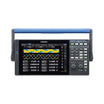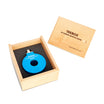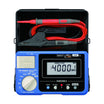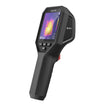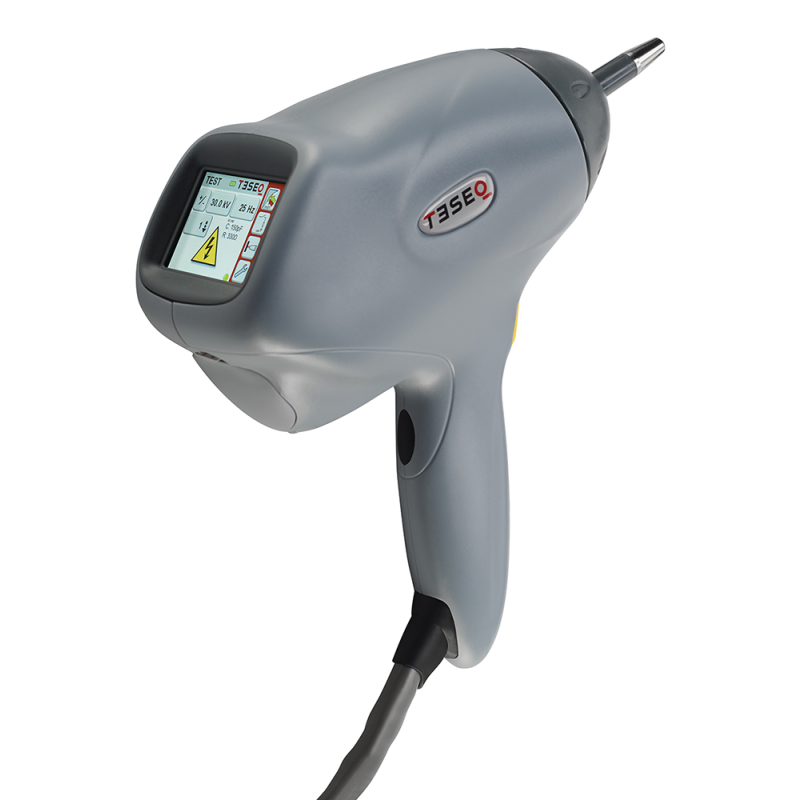
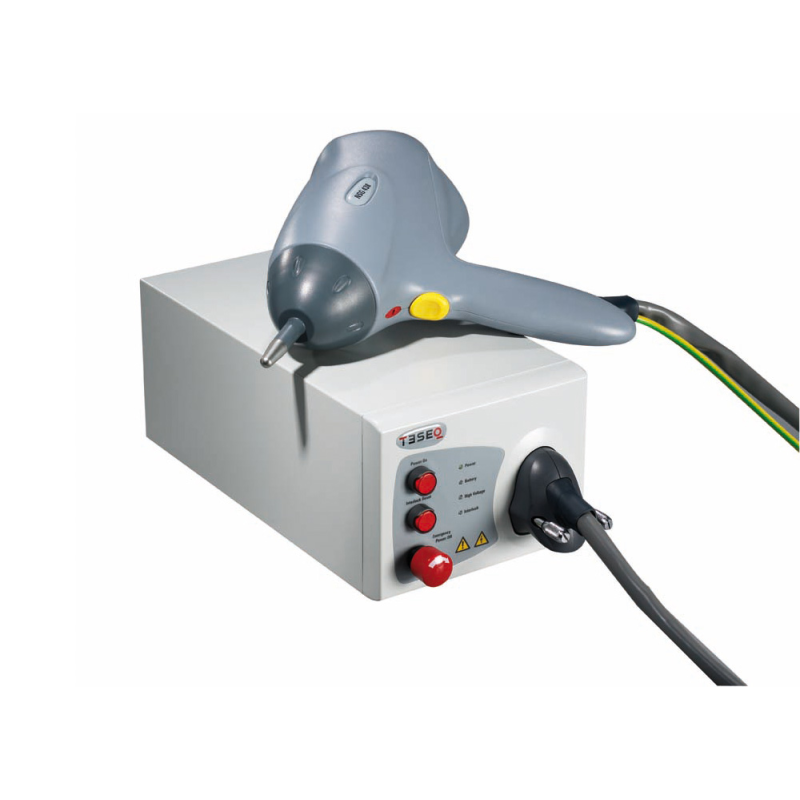
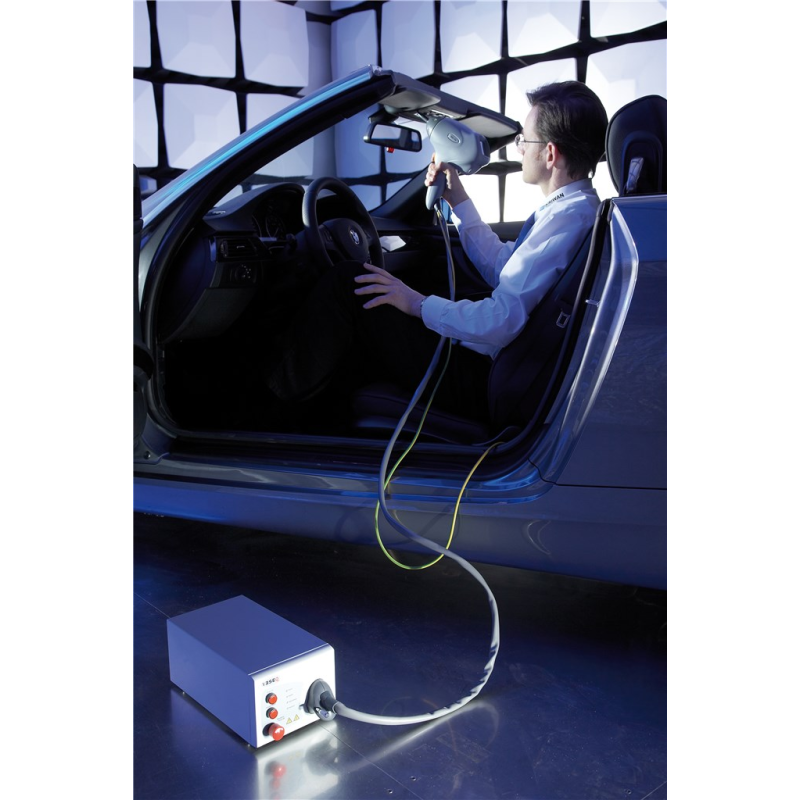
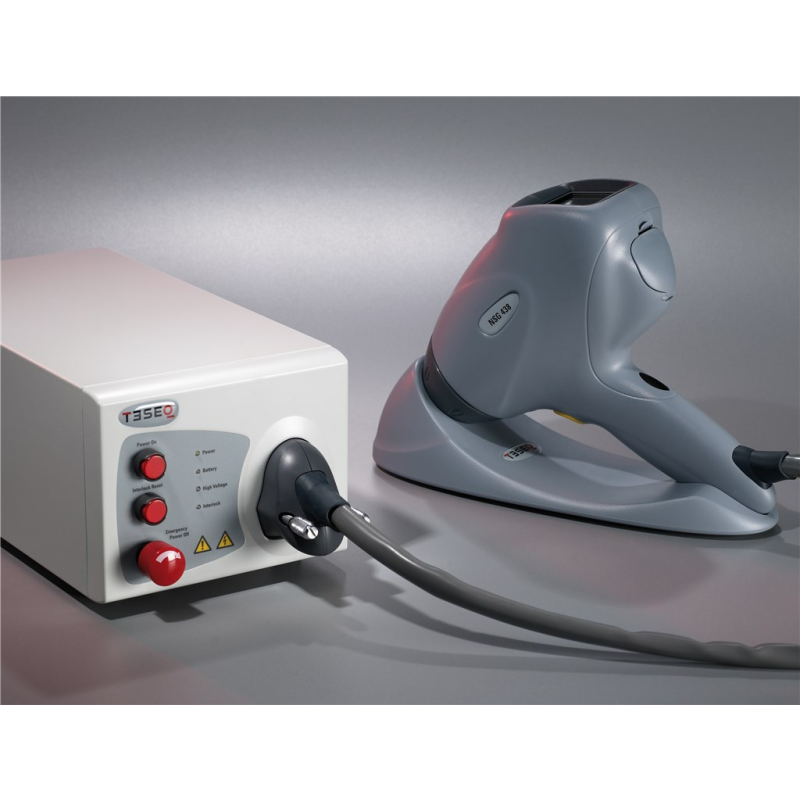
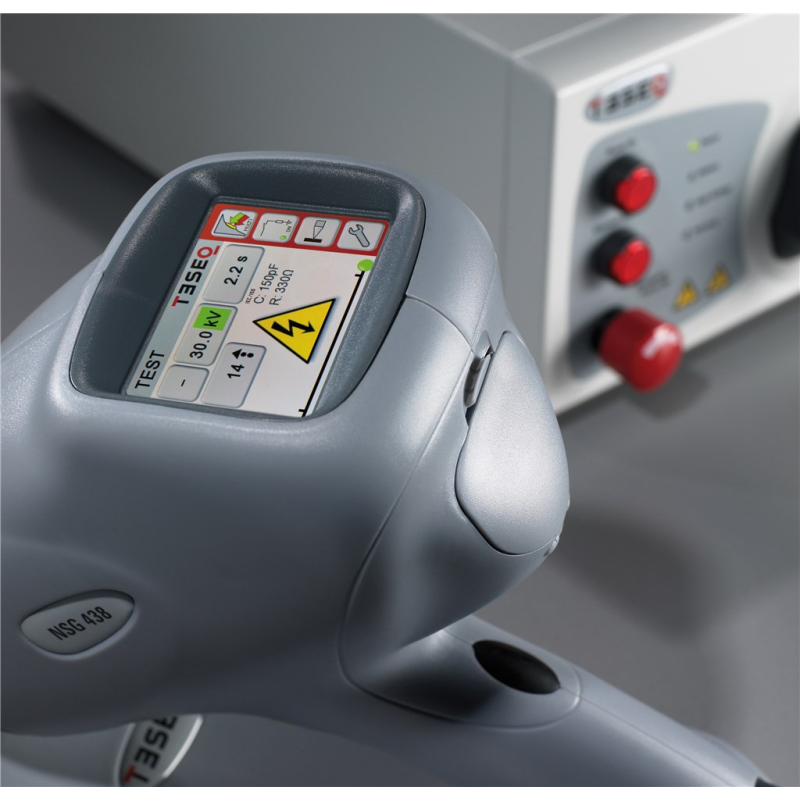
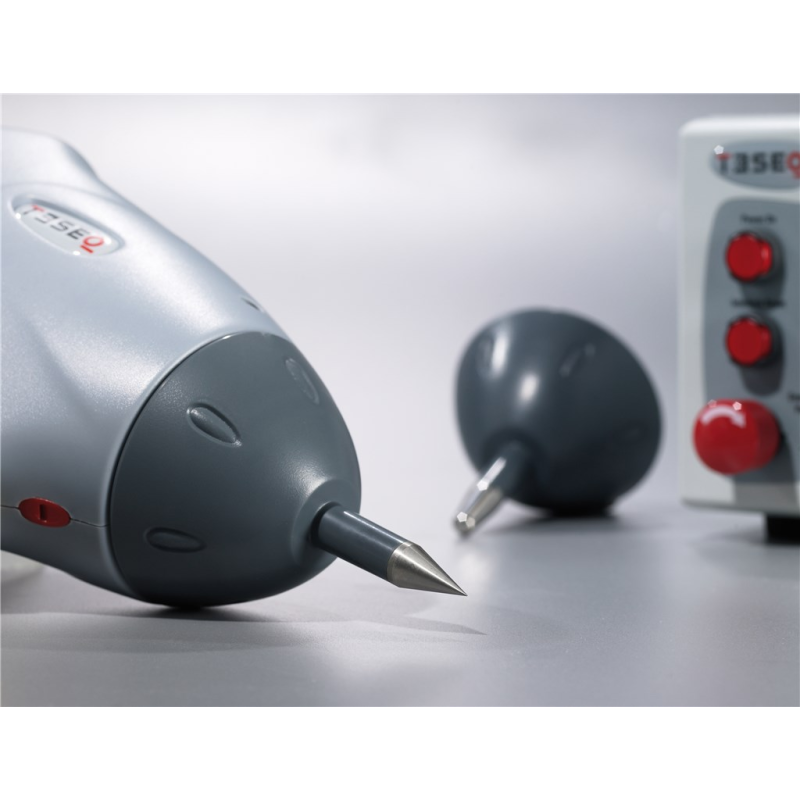
Teseq NSG 438 / NSG 438A Flagship ESD Simulator
Use our chat for personal support or contact us via +45 31 33 18 19 or salg@GOmeasure.dk
- Air- and contact-discharge to 30kV
- Battery tested to 30’000 discharges at 30kV
- Color touch panel control
- Advanced voltage-hold feature
- Activity log
- Compliant with a huge range of OEM and international standards
- Built-in ISO self-calibration procedure
- Easily and quickly interchangeable discharge networks
Discover the possibilities
More information
Description
Ergonomic design and advanced functionality. The NSG 438 ESD simulator is designed to sit comfortably in the operator’s hand, with operating conditions constantly displayed and accessible on a bright, clear color touch display.
NSG 438 comprehensively fulfills virtually all international standard requirements. Based on over 60 optional discharge networks, the NSG 438 can meet any of today’s automotive manufacturers’ standards.
The simulator is simple, convenient and safe to use. The whole range of parameter settings including polarity selection, freely adjustable pulse repetition, counter functions and discharge detection is available up to the maximum discharge voltage.
The color touch display and keypad for parameter input shows the precise functional and test data with user-selectable language for convenient and safe operation worldwide. The simulator contains variable threshold selection for accurate discharge detection. This detection feature can be switched off when testing EUT’s with non-conductive surfaces, such as plastic housings. Pre-programmed settings for IEC 61000-4-2 and ISO 10605 ensure that the simulator is automatically set up correctly and the appropriate discharge network is installed. The actual RC value is displayed at all times. Molded HV discharge networks in solid cases eliminate ionization and leakage current effects. Precisely tuned combinations of RC components guarantee wave shape parameters to be within tolerances. A unique activity log is included so that the types and numbers of ESD simulations can be easily scrolled through to check what has been tested and in what timeframe.
The NSG 438A features additionally a build in, switched, 1 MOhm bleed off function. This function is particularly useful in applications where the EUT discharge point is not connected to ground (ex: battery powered equipment, connector pins , etc.). In such cases a build in bleed off function can avoid external manual bleed off to be done between 2 discharges.
| Parameter | Value |
|---|---|
| Basic set | Carrying case with: discharge pistol, cradle for discharge pistol, high voltage base unit with built-in battery pack, mains adapter and battery charging unit (100 to 250 VAC), discharge network 150 pF/330 Ω, air- and contact-discharge tips, grounding cable, user manual, 25 mm discharge sphere |
| Pulse networks | Network 150 pF/330 Ω as per IEC/EN 61000-4-2 and ISO 10605 (included)Optional ISO 10605 networks 330 pF/330Ω, 150 pF/2 kΩ and330 pF/2 kΩRange of RC networks for other standards:R = 0 Ω to 20 kΩ; C = 50 to 2000 pF |
| Discharge voltage | Air-discharge: 200 V to 30 kV (in 100 V steps)Contact-discharge: 200 V to 30 kV (in 100 V steps) |
| Discharge tips | Ball and point as per IEC and specials, exchangeable by threaded cap |
| Charging voltage measurement | kV, accuracy better than ±5% (stabilized) |
| Discharge detection (air-discharge only) | Indicated by the kV symbol being displayed in inverse also acoustically in the ‘Single’ operating mode. Adjustable threshold level. |
Specifications
Documents
Datasheet:
Options
Video
Ergonomic design and advanced functionality. The NSG 438 ESD simulator is designed to sit comfortably in the operator’s hand, with operating conditions constantly displayed and accessible on a bright, clear color touch display.
NSG 438 comprehensively fulfills virtually all international standard requirements. Based on over 60 optional discharge networks, the NSG 438 can meet any of today’s automotive manufacturers’ standards.
The simulator is simple, convenient and safe to use. The whole range of parameter settings including polarity selection, freely adjustable pulse repetition, counter functions and discharge detection is available up to the maximum discharge voltage.
The color touch display and keypad for parameter input shows the precise functional and test data with user-selectable language for convenient and safe operation worldwide. The simulator contains variable threshold selection for accurate discharge detection. This detection feature can be switched off when testing EUT’s with non-conductive surfaces, such as plastic housings. Pre-programmed settings for IEC 61000-4-2 and ISO 10605 ensure that the simulator is automatically set up correctly and the appropriate discharge network is installed. The actual RC value is displayed at all times. Molded HV discharge networks in solid cases eliminate ionization and leakage current effects. Precisely tuned combinations of RC components guarantee wave shape parameters to be within tolerances. A unique activity log is included so that the types and numbers of ESD simulations can be easily scrolled through to check what has been tested and in what timeframe.
The NSG 438A features additionally a build in, switched, 1 MOhm bleed off function. This function is particularly useful in applications where the EUT discharge point is not connected to ground (ex: battery powered equipment, connector pins , etc.). In such cases a build in bleed off function can avoid external manual bleed off to be done between 2 discharges.
| Parameter | Value |
|---|---|
| Basic set | Carrying case with: discharge pistol, cradle for discharge pistol, high voltage base unit with built-in battery pack, mains adapter and battery charging unit (100 to 250 VAC), discharge network 150 pF/330 Ω, air- and contact-discharge tips, grounding cable, user manual, 25 mm discharge sphere |
| Pulse networks | Network 150 pF/330 Ω as per IEC/EN 61000-4-2 and ISO 10605 (included)Optional ISO 10605 networks 330 pF/330Ω, 150 pF/2 kΩ and330 pF/2 kΩRange of RC networks for other standards:R = 0 Ω to 20 kΩ; C = 50 to 2000 pF |
| Discharge voltage | Air-discharge: 200 V to 30 kV (in 100 V steps)Contact-discharge: 200 V to 30 kV (in 100 V steps) |
| Discharge tips | Ball and point as per IEC and specials, exchangeable by threaded cap |
| Charging voltage measurement | kV, accuracy better than ±5% (stabilized) |
| Discharge detection (air-discharge only) | Indicated by the kV symbol being displayed in inverse also acoustically in the ‘Single’ operating mode. Adjustable threshold level. |


